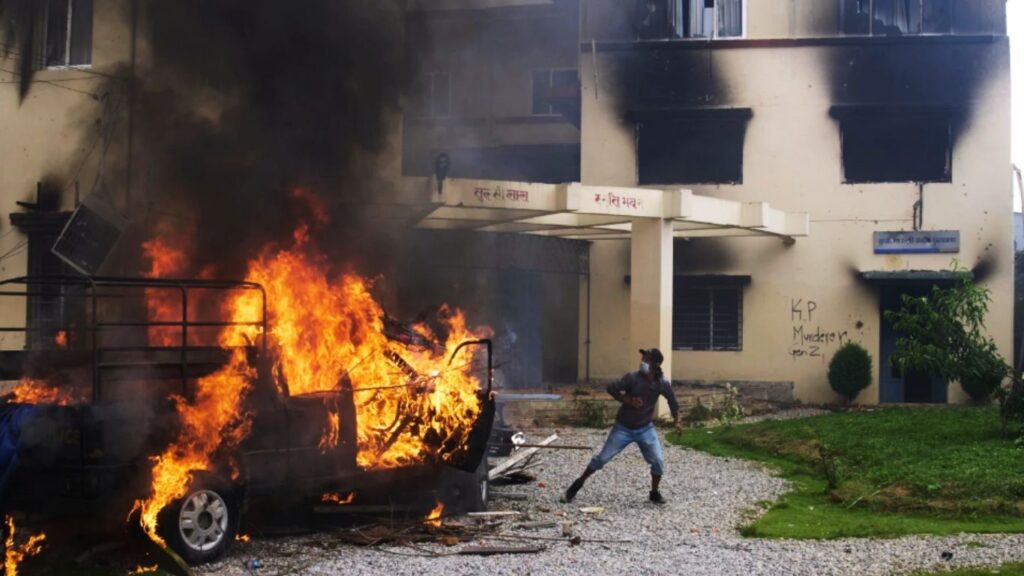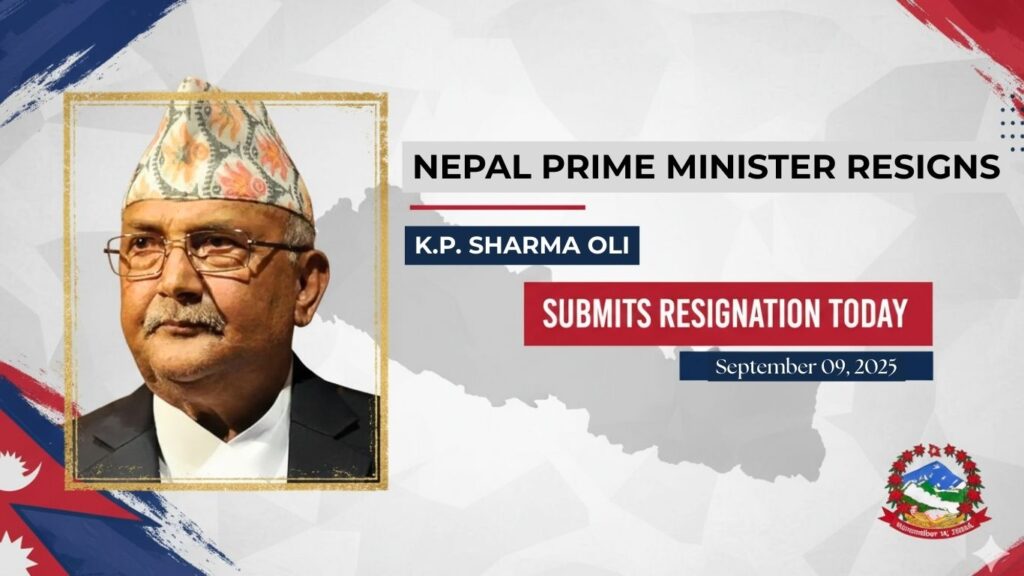Nepal’s Prime Minister KP Sharma Oli stepped down on September 9, 2025, following mass protests against a controversial social media ban that turned violent, killing 19 and injuring over 100. The government has lifted the ban, but the anger on the streets still runs deep.
New Delhi: Amid mounting unrest, Nepal’s Prime Minister KP Sharma Oli resigned on Tuesday after a government-imposed social media ban sparked violent protests that claimed at least 19 lives and injured more than 100 people. The resignation marks one of the most dramatic political crises in the Himalayan nation in recent years, triggered by a decision that ignited mass anger among the country’s youth.
Why the Ban Was Imposed
On September 2, the Oli government ordered a blanket ban on 26 popular social media platforms, including Facebook, Instagram, YouTube, WhatsApp, and X (formerly Twitter). Officials argued the move was necessary because these platforms had failed to register as foreign entities under new regulations, spreading what they called “misinformation” and posing a “national security risk.”

But critics saw the ban as a thinly veiled attempt to curb dissent. For millions of Nepalese youth who rely on social media for education, jobs, and expression, the ban felt like an attack on free speech and opportunity.
Youth-Led Protests Across Nepal
Almost immediately, protests broke out across Kathmandu, Pokhara, and other major cities. Young protesters, rallying under the banner of the “Gen Z Movement,” pressed for the immediate end of the ban. They argued that social media was more than just entertainment — it was a vital platform in a country grappling with unemployment and scarce opportunities.

As days passed, the demonstrations grew larger and more confrontational, drawing in students, civil society groups, and ordinary citizens frustrated with political stagnation.
Violence and Loss of Lives
The turning point came on September 8, when protests escalated into violent clashes. To break up the protests, security forces used tear gas and rubber bullets, later escalating to live ammunition.
- At least 19 people were killed.
- The clashes left more than 100 injured, including demonstrators, security forces, and ordinary citizens caught in the chaos.
- Angry crowds stormed government buildings and set fire to homes of senior leaders, including those belonging to ruling party officials.
The scale of bloodshed shocked the nation and intensified calls for accountability.
Political Fallout and Oli’s Exit
The violent crackdown had immediate political consequences. Home Minister Ramesh Lekhak resigned on Monday, taking moral responsibility for the deaths.
By Tuesday, as pressure mounted, Nepal’s PM K. P. Sharma Oli announced his resignation. In his televised statement, he said he was stepping down “to facilitate a solution to the problem and to help resolve it politically.”
Oli, who had served multiple terms as Prime Minister, leaves office under intense criticism and speculation that he may seek temporary exile or attempt a political comeback in the future.
Ban Lifted, But Anger Remains
Soon after Oli’s resignation, the government officially lifted the social media ban. However, protests have not completely subsided. Demonstrators say lifting the ban is not enough — they want justice for those killed and meaningful reforms to address corruption, unemployment, and what they describe as years of broken promises by political leaders.
International Reactions
The international community reacted swiftly:
- India and other neighboring countries extended condolences and called for calm.
- Human rights groups strongly criticized the authorities for using lethal force against protesters.
“The use of live ammunition against protesters is unacceptable and a violation of international human rights standards,” said Human Rights Watch in a statement.
- Calls for an independent investigation into the killings have intensified.
Also Read: Who Was Captain Vikram Batra? Life, Kargil War Heroics and Love Story Explained
Gen Z: A Movement Beyond Social Media
The crisis has been labeled a “Gen Z uprising”, reflecting how deeply social media is tied to Nepal’s younger generation. For many, it provides access to education, remote work, activism, and global opportunities.
The ban was therefore seen not only as a policy misstep but also as an attack on a generation striving for change in a country where political instability has been the norm.
Oli’s resignation opens a new phase of political uncertainty in Nepal. An interim Prime Minister is expected to be appointed while discussions of fresh elections gather pace. Analysts say the next government will face the dual challenge of regaining public trust and balancing regulation of digital platforms without infringing on rights.
For now, Nepal stands at a crossroads: shaken by violence, driven by a restless youth, and awaiting a leadership that can bridge the gap between authority and aspiration.
Also Read: Delhi on High Alert as Hathni Kund Barrage Releases Over 3 Lakh Cusecs of Water






